Sustainable Babies 101: How to Stay Green As a New Parent
Sure, babies need things, but there is almost always a sustainable alternative.
Updated Feb. 7 2019, 12:41 p.m. ET
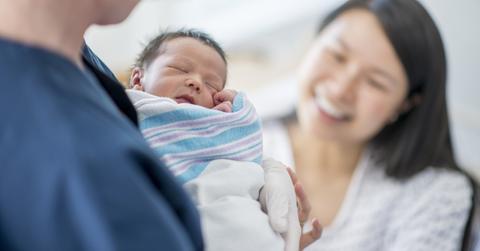
Babies require a lot of stuff. Stuff adds up (expense-wise and also from an accumulation standpoint). It may feel like bringing a baby into the world couldn’t possibly be done while leading a zero-waste lifestyle. If the sheer size of your baby registry is already causing panic, maybe a more minimalistic, sustainable approach is the option for you. Sure, babies need things, but there is almost always a sustainable alternative.
Keep reading for an in-depth guide on how to keep child-rearing (and raising!) as sustainable as possible!
Feeding
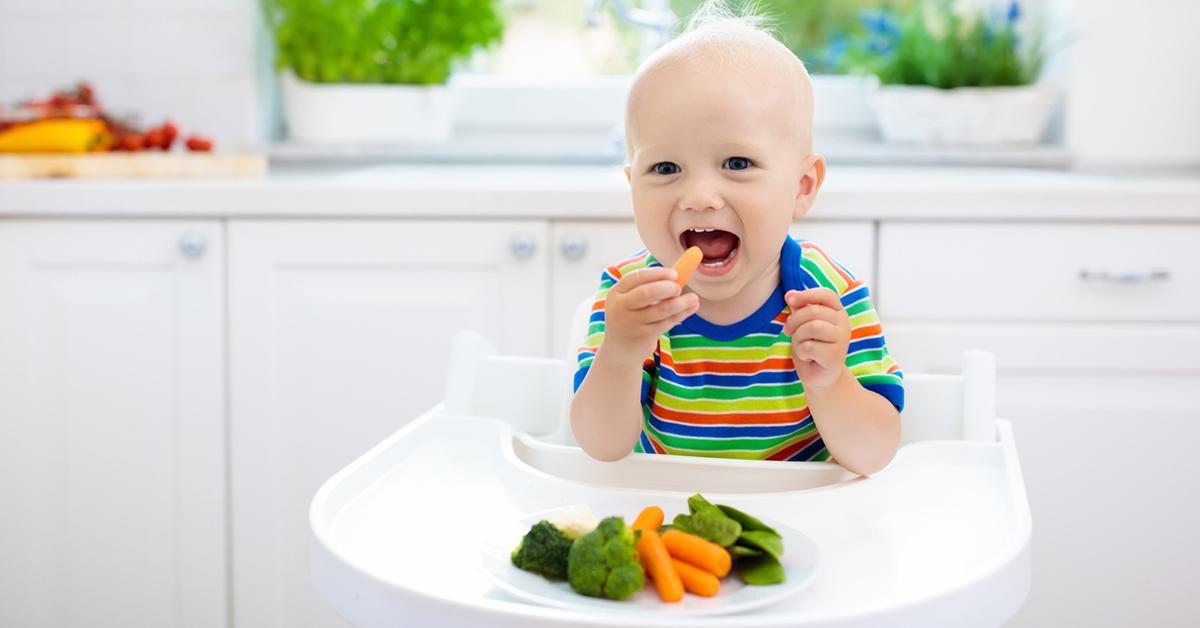
Breastfeeding is the most zero-waste feeding option out there. If you’re looking to reduce the footprint of your child-raising process, breastfeeding is cost-effective and requires less equipment. Though keep in mind, some equipment is still required in most cases.
Breast pump
Most breast pumps will have a plastic component, but you’ll want to make sure your pump has silicone cups. Not only is the silicone soft and comfortable, but it’s also durable, reusable, and safe. Try this silicone cup pump from PJ’s Comfort.
Reusable nursing pads
Many nursing pads are single-use, throw-away items but a sustainable approach lends itself to reusable nursing pads made out of a more sustainable material. These bamboo nursing pads are made from sustainably-sourced organic bamboo, are reusable, washable, and are super absorbent, preventing leakage.
Burp cloths
A burping baby might “cheese up” or cough up something yucky, so it’s always a good idea to have burp cloths on hand. To keep things eco-friendly, look for burp cloths made from a sustainable material, like these muslin ones from 100 percent organic cotton. They are machine-washable and therefore reusable.
Bibs
Eco-friendly baby bibs surprisingly come in a range of options. Bibs made from silicone are easy to wipe and don’t stain while hemp bibs are super absorbent and washable. Muslin bibs made from 100 percent organic cotton or bamboo are also worth looking in to, as each of these are reusable and machine washable.
Bottles
If your baby is going to be bottle-fed (or for some unforeseeable reason, ends up being bottle-fed), there are a lot of options out there for sustainable bottles. Some glass bottles come with silicone adhesive that help protect bottles from breakage and aid in gripping, but if you don’t think glass works for you, a stainless steel bottle with a silicone nipple might be a doable alternative. One of the other advantages of going the stainless steel or glass bottle route is that both options are generally nontoxic. While many plastic baby bottles claim to be BPA-free, plastic leaching is a real health concern, especially for babies.
Sippy cups
When your baby outgrows bottles and is ready for a sippy cup, you’ll be happy to know that there’s more on the market than just plastic. These sippy cups made from wheat straw claim to be biodegradable, so at the end of their life, you can either reuse for another child or throw the cup in your compost pile!
Formula
Unfortunately, finding zero-waste baby formula is extremely difficult. Whenever possible, buy formula in recyclable containers to minimize carbon footprint and overall waste.
Baby food
Luckily, most baby food comes in glass jars and since glass can be recycled forever, it’s one of the most sustainable materials out there. But have you ever considered making your baby’s food? It might seem like a lot of time and effort to create something you can buy in-store, but it’s one of the most sustainable practices you can have while child-rearing.
Believe it or not, it doesn’t take a lot to make baby food at home. Puree your own vegetables and fruits using a blender, make them in big batches, and freeze in a silicone ice cube tray before transferring to a reusable container. Check out a list of baby food recipes here.
Tableware
If you’re looking at your baby registry from both a low-impact perspective and nontoxic perspective, you might start getting annoyed at just how much baby gear is made from plastic. Even if it’s BPA-free, it’s not always safe. Baby tableware is no exception, as it’s often made from plastic. Avanchy makes bamboo and silicone tableware with little hands and tiny mouths in mind, so parents can have peace of mind.
The Nursery
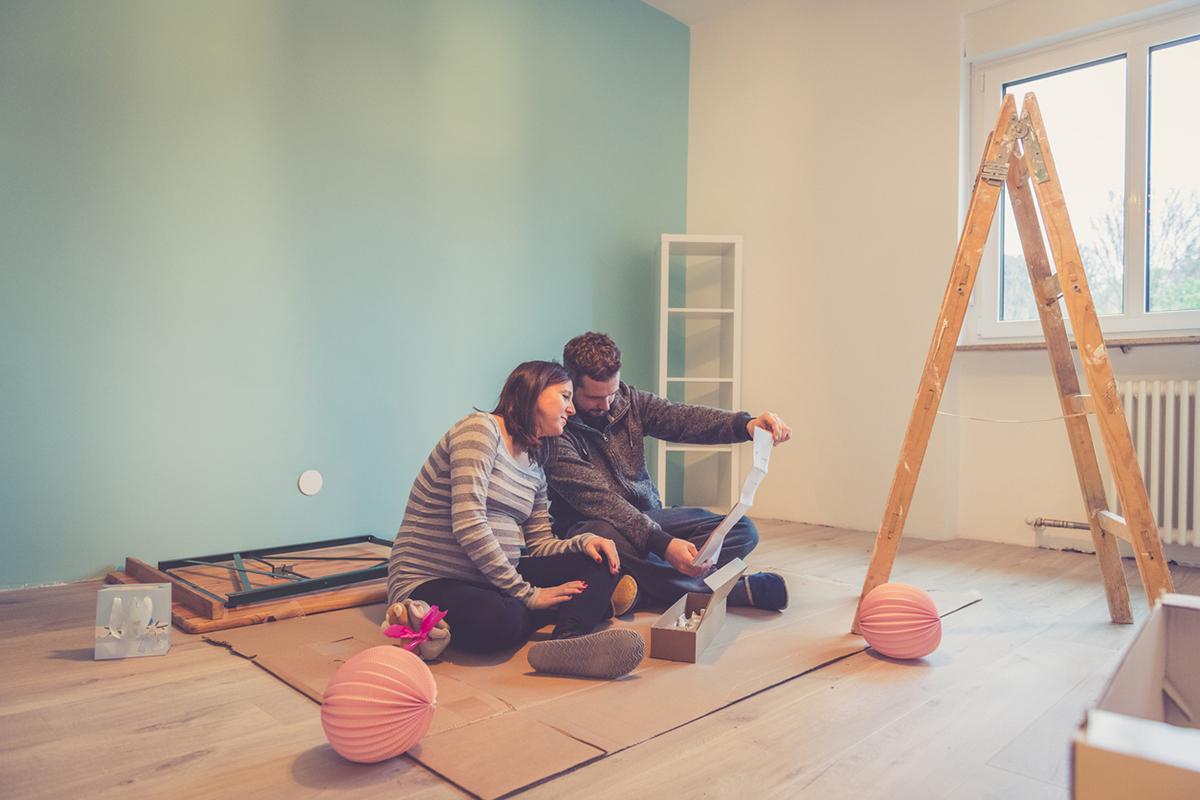
The goal with creating a low-impact, non-toxic nursery is to either grab big things secondhand or look for sustainably-sourced materials like 100 percent organic cotton muslin or organic bamboo. Unfortunately, bigger things like cribs come sustainably-sourced and nontoxic for a pretty high price point. Whenever possible, try to acquire things secondhand.
Swaddling cloth
It’s pure fact that babies love to be swaddled. As a parent, it’s your job to make sure the material they’re swaddled in is the safest stuff on the market. Cloths made from 100 percent organic cotton muslin, like these, or bamboo, are great nontoxic and eco-friendly options.
Crib
As mentioned above, sustainable/non-toxic cribs can get pretty expensive. One route is to find a crib second-hand either from someone you know or a thrift shop. If non-toxicity is a main concern and you’d prefer to know the crib’s materials, this IKEA crib is made from beech wood, with a bit of nylon padding in the fabric.
Mattress
All-natural crib mattresses can also get expensive. Conventional mattresses are made with yucky materials like polyurethane foams, which are full of toxins and chemicals both detrimental to the planet and our health. Polyurethane is derived from petroleum and is usually combined with flame retardants and other toxic adhesives, which together emit volatile organic compounds, known carcinogens.
Brentwood Homes makes a line of non-toxic crib mattresses less than $300. The key to finding a nontoxic, sustainable mattress is 100 percent natural latex rubber; any mattress with a blend of synthetics is going to still be toxic. If you prefer a cotton mattress, make sure to check the label for “certified organic cotton.” This ensures the cotton used for the crib mattress wasn’t treated with pesticides. Good fabrics to look for include organic cotton, 100 percent natural latex rubber, and wool fiber (though wool is not vegan).
Diapering

Most zero-wasters’ main concern about raising sustainable babies usually pertains to diapering. It’s a messy, often gross business, but conventional single-use diapers are really harmful to our environment and end up in landfills where they don’t break down for years and years. Don’t worry — there are other options out there that cut back on the wasteful process of diapering.
Diapers
There are two main options for sustainable diapering — cloth diapers and bamboo-made. Thirsties makes cotton nappies that are washable and reusable; the outer layer is 100 percent polyester and the inner layer includes 100 percent organic cotton with an absorption layer made of 55 percent hemp, and 45 percent organic cotton.
Reusable cloth wipes
Etsy is an absolute gold mine for buying inexpensive reusable cloth wipes. Instead of wasting money on single-use wipes that are just going to end up in a landfill (and are coated with who-knows-what chemicals that touch your baby’s bottom), resolve to use cloth. In fact, you don’t even have to purchase cloth wipes. You can just repurpose old pieces of fabric, t-shirts, or rags.
Wet bag
With conventional diapers, a wet bag isn’t necessary. After all, conventional diapers are single-use and after they’re wrapped up, they go in the trash. But when cloth diapering, the dirty cloth diapers need to go somewhere while they’re still wet and dirty… especially when you’re on the go. Wet bags are made from waterproof TPU laminate and zip up tightly to prevent odor and leakage. You might need two: one at home and one for the diaper bag.
Diaper bag
A diaper bag is one of those baby must-haves you might want to grab secondhand. Or if you have an old tote or backpack lying around, that will do, too! Diaper bags don’t really have a long shelf-life — once your babies are grown, there’s no need for one anymore — so if you want to cut back on baby registry items, repurposing an old bag is always a way to do that. If you prefer to buy a new one, look for canvas or cotton.
Diaper balm
There are tons of baby butt pastes out there on the market, but they usually come in plastic packaging. Coconut oil is a natural alternative to diaper balms and you can usually find it in a glass container.
Bathing

A lot of baby stuff for bath time is made from plastic. Whether it’s BPA-free or not, there are so many ways you can cut back on plastic during bath time. For one thing, you really don’t need much to give baby a bath: just some gentle soap, towels and cloths, and clippers to keep Baby’s nails in check. A plastic tub for baby is great if you want one, but it’s also unnecessary if you have a sink and a partner who can help out.
Castile soap
Forget everything Johnson & Johnson commercials have told you about bath time. All your baby needs is some all-natural Castile soap when can be bought in bulk.
Towels and cloths
Towels and cloths can always be found secondhand. Otherwise, towels made from 100 percent organic cotton or these hooded ones made from bamboo are nontoxic options that also happen to be absorbent and comfortable.
Nail clippers
When babies’ nails get too long, they run the risk of scratching themselves (or you). That’s why baby nail care is totally necessary. These clippers from Green Sprouts are made with baby in mind but unfortunately, the materials aren’t sustainable or non-toxic.
Toothbrush
Babies need their teeth brushed too and the most sustainable way to do that is with a silicone brush. This one available on Amazon is made from 100 percent food grade silicone, FDA-approved, and BPA-free. The silicone makes grip easier for your baby, once they’re ready to start “helping” you brush.
Bath toys
Most bath-time toys are made from plastic and aren’t always BPA-free. Oli & Carol makes rubber toys like this origami boat and rubber duck that are both biodegradable. At the end of these toys’ lives, you can throw them in the compost bin.
Toys
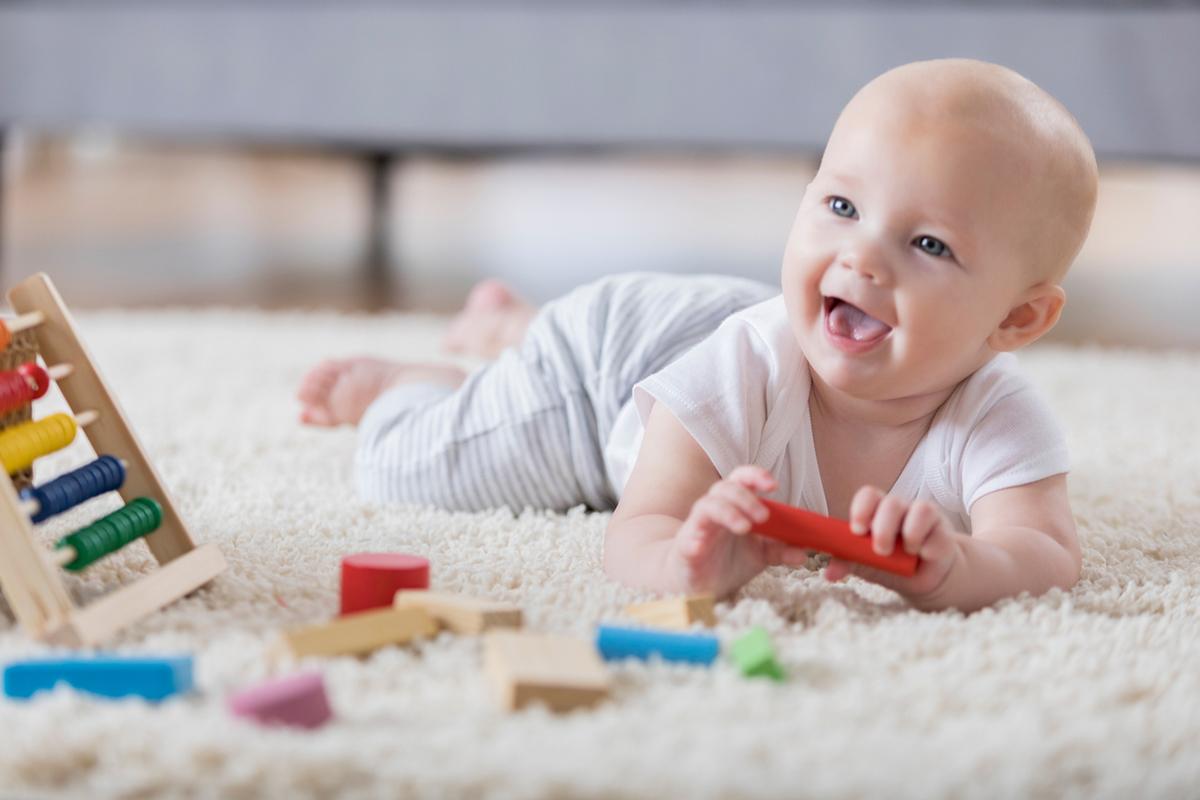
It might seem like baby toys are exclusively made from plastic these days, but it’s not the case. You just have to know where to go. Nontoxic, eco-friendly toys can be made out of wood, 100 percent organic cotton macramé, 100 percent rubber, wool, and more.
Play gym
Finn + Emma makes a woodland play gym that features a 100 percent birch wood frame finished with nontoxic stains and all-natural lacquers. The attached dolls and rattles are made phthalate-free and are knitted from organic cotton.
Swing
Ditch the plastic swings and spring for Fin + Emma’s macramé swing made from 100 percent organic cotton and solid wood bar. It’s fair trade, handmade in India, and accommodates tots up to 50 pounds.
Other toys
Nova Naturals has a great wooden alternative to nearly every kind of plastic toy and you can also find sustainably-sourced wooden blocks, LEGOs (for older kids), and The Eco Baby has some sustainably-made rattles, wooden cars, and more.
Miscellaneous
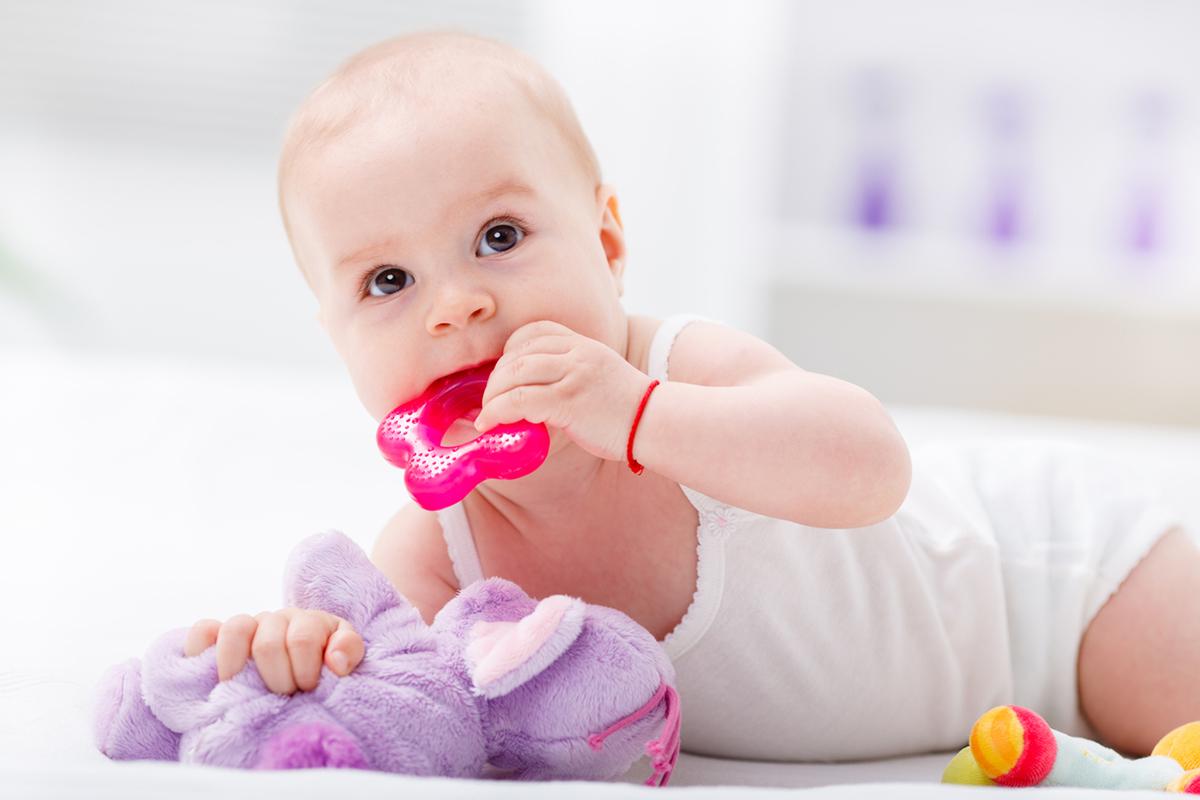
For the seemingly random baby gear that doesn’t fit into any category…
Pacifier
Most conventional pacifiers are made from silicone, rubber, and hard plastic components, but sustainable binkies eradicate the need for a hard plastic component. Natursutten makes pacifiers from 100 percent natural rubber, free of BPA, nitrosamines, PVC, phthalates, chemical softeners, and artificial coloring.
Silicone teethers
Sustainable teethers aren’t just made from sustainable materials, they’re also like, really, really cute. The Eco Baby has natural rubber teethers that are easy for tiny hands to grip and nontoxic rubber animal teethers painted with food-grade dyes. We especially love the Oli & Carol Kendall kale teether made from 100 percent rubber from Hevea Malaysian trees.
Car seat
Finding a sustainable car seat is difficult. Getting one secondhand isn’t really an option because car seats must be up to the most recent safety standards. Generally, car seats expire within six years of purchase. Nuna’s materials and manufacturing process are impressively eco-friendly; Nuna never uses synthetic flame retardants on their car seats and features aluminum, steel, fabric, and (minimal) plastic components. It’s one of the best options out there. When choosing a car seat, make sure to look into the company’s sustainability practices and material-sourcing.
Stroller
Die-hard zero wasters will say that strollers aren’t necessary but if you think a stroller is a fit for your family’s lifestyle, then make sure you look in to the materials. Greentom uses a 100 percent organic mattress and fabric made from 100 percent recycled PET bottles with some components of recycled polypropene and bio-plastic. If you can get a stroller second-hand, that’s also a great sustainable option.
Clothes
Procuring secondhand clothes is always a great option to ensure baby clothing gets a longer shelf life. Ask around your family and friend groups to see if anyone has a bag of baby clothes they’re looking to get off their hands. When buying baby clothes new, you want to look for 100 percent organic, bamboo, or wool options. Shy away from synthetic fibers and dyes that aren’t plant-based if possible.